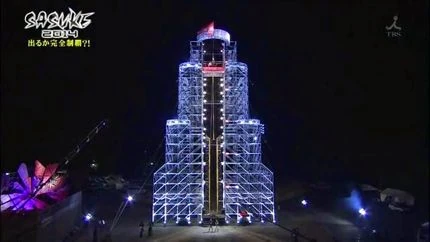Team Ninja Warrior
Based on everything that has been written, it may seem that Ninja Warrior is a solitary sport. The opposite is actually true; the community around Ninja Warrior is extremely active. Unofficially, there are many teams that compete and train together such as the Wolf Pack. These teams, however, are only unofficial. What if these teams were official and competed against one another?

In 2016, ANW decided to answer this question with Team Ninja Warrior. Team Ninja Warrior showcases teams facing off across multiple rounds. Consisting of three ninjas each (with two men and one woman), the teams would race against one another through a course. Within each round, the ninjas would compete against one another, earning points for completing the course faster than the other team.

The implications of this different format are intriguing. In this format, ninjas are able to test how fast they are able to go. Some notable ninjas always run at full speed, such as Lorin Ball, Drew Drechsel, and Flip Rodriguez. For other, more methodical ninjas, however, we are never sure just how fast they could go. While the ninjas only have one chance on American Ninja Warrior, there are multiple attempts at each course for every athlete on Team Ninja Warrior. The potential for extreme, extraordinary results is greater in this alternate format.

In one of my previous posts, I touched on the differences between gymnasts and rock climbers. These two groups of ninjas specialize, with considerably different strengths and weaknesses. Even within these two groups, however, there is further specialization. Brian Arnold is probably the strongest ninja in the sport. Lorin Ball, as inconsistent as he may be, is probably the fastest ninja. Drew Drechsel and Daniel Gil are the most naturally athletic ninjas. What is special about the format of Team Ninja Warrior is that, with a possible expansion, there is potential for even further specialization.

The future of the ninja sport depends on the expansion of the competition, and Team Ninja Warrior is the natural progression of the sport. American Ninja Warrior is a fun and compelling sport, but there is so much potential for the ninja world to expand and specialize. Team Ninja Warrior allows ninjas to test how quickly they can complete courses. Future competitions could allow athletes to specialize within certain roles or create new roles entirely. Team Ninja Warrior is an amazing sport, and its success shows that American Ninja Warrior will succeed for years to come.
<http://sasukepedia.wikia.com/wiki/Team_Ninja_Warrior>

/cdn.vox-cdn.com/uploads/chorus_image/image/50269693/Screen_20Shot_202016-08-01_20at_2012.37.30_20PM.0.png)












